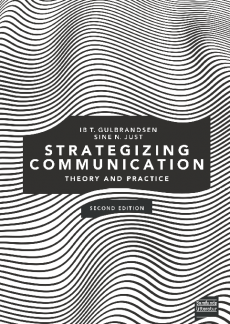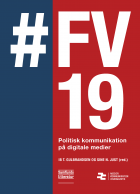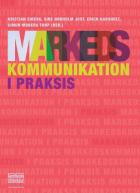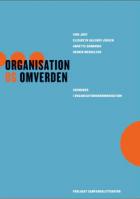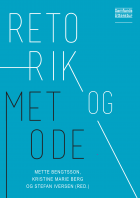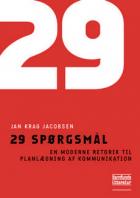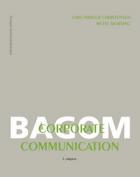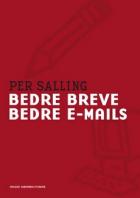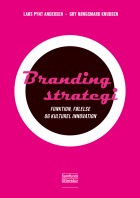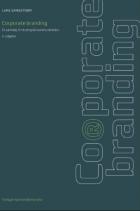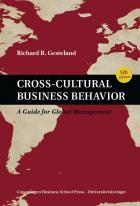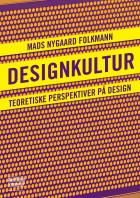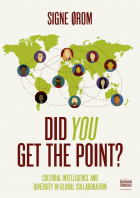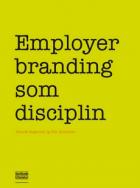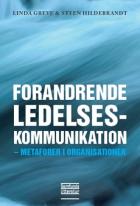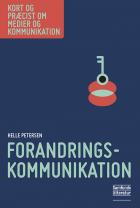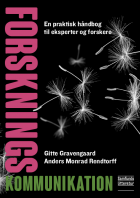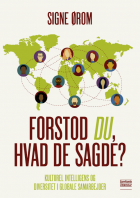Content section
Strategizing Communication
Theory and Practice
Køb bogen
Yderligere information
Dear reader 13
Keys to reading this book 15
1. Strategizing communication 17
On not having a strategy 19
The nuances of being strategic and having
a strategy 19
Who communicates strategically? 22
Three assumptions about organizations
debunked 24
What does this mean for strategic
communication? 31
Focus on the doing, not the done 32
A definition 34
The five Ps of strategizing
communication 36
Strategizing communication as plan 39
Strategizing communication as ploy 42
Strategizing communication as pattern 44
Strategizing communication as position 46
Strategizing communication as perspective 48
Ontologically and epistemologically
speaking 51
Relationality 51
Pragmatism 53
Key questions 57
Key points 57
Key case 58
Key texts 63
2. Strategy as deliberate decision 65
Logic: strategy is planned, competitive
advantage 67
Historical context, part one 68
Machiavelli and his pragmatic Prince 68
Clausewitz and (the return to) military
strategy 70
Historical context, part two 71
Chandler: strategy and structure 71
Ansoff: strategy as rational planning 72
The big (contemporary) bang: Porter
and competitive advantage 76
The five forces 76
Generic strategies 82
Critique of Porter 84
Market and competition analysis 86
Four basic market types 87
PESTEL 91
Environment, environment, environment 93
Key questions 93
Key points 93
Key case 94
Key texts 97
3. Strategic communication as plan 99
Logic: strategic communication is planned
communication 101
Understanding communication as
transmission 103
From intention to effect 104
Hierarchies of effect 106
The two-step flow model of communication 109
Diffusion of innovations 112
Uses and gratifications 114
Planning communication 117
Analyze: position and target groups 121
Plan: objectives and message 127
Execute: media and evaluation 131
Key questions 138
Key points 138
Key case 139
Key texts 143
4. Strategy as emergent action 145
Logic: strategy is what strategists think
and do 147
On not acting rationally 149
Simon and Lindblom: bounded rationality and
muddling through 149
Cohen, March and Olsen: the garbage can of
decision-making 151
Strategy as sense-making 153
Weick: retrospectively talking strategies
into being 154
Prospective strategy-making: changing perceptions
and envisioning the future 156
Strategy as narratives 158
Barry and Elmes: narrating the
organization's behaviour 159
Strategy as practice 161
SAP: focusing on the nitty-gritty 161
Whittington: three levels of practice 163
Mintzberg: realized strategy 166
Deliberate and emergent 168
Five Ps for strategy 169
Key questions 171
Key points 171
Key case 172
Key texts 175
5. Strategic communication as process 177
Logic: strategic communication is all about
process 179
Understanding communication as collaborative
meaning formation 180
Encoding - decoding 181
The communicative act 185
Communicative chains 188
The process of process 191
Consensus vs. conflict 192
Intentionality vs. emergence 195
Emergent communication strategies 197
Strategic communication as the
communicative constitution of organization 199
Strategizing communicative constitution 205
Key questions 206
Key points 206
Key case 207
Key texts 211
6. External AND internal 213
Strategizing inside-out and outside-in 215
Branding 218
The deep, semio-narrative and discursive
levels of branding 221
The VCI model 223
Organizational culture 227
Three levels of culture 227
Three perspectives on culture 231
Stakeholder relations 233
The simple stakeholder model 235
The stakeholder salience model 237
Stakeholders as self-organizing publics 240
Strategizing communication as power
games 243
Key questions 246
Key points 246
Key case 247
Key texts 250
7. Offline AND online 251
What happens offline does not stay offline 253
A new media landscape 255
Collaborative and power-shifting
infrastructure 256
The reconfiguration of time and space 258
Hypertextual and hypermediated meaning
formation 260
The result: a hybrid media ecology 261
Cross-media communication 266
COPE strategy 268
Cross-media value creation 271
Transmedia storytelling 276
Cross-media + narrative = transmedia
storytelling 276
'If
it doesn't spread, it's dead' 279
Message design 282
The more immersive, the more persuasive 282
Media mix 286
Level of stakeholder involvement 289
Media synergy 292
Media sequence 294
Key questions 296
Key points 296
Key case 298
Key texts 301
8. Profitable AND ethical 303
A new purpose for corporations 305
Corporate social responsibility 307
Creating shared value 310
CSR communication 313
Globalization 314
What is globalization? 315
Intercultural communication 320
Issues management 323
Risks, issues, crises 325
Crisis communication 327
Responsible communication for an age
of global crises 332
Ethical responsibilities 332
Environmental responsibilities 334
Key questions 336
Key points 336
Key case 337
Key texts 342
9. Social AND material 343
What it all amounts to 345
The sociomateriality of strategizing
communication 348
On favouring one side or the other 349
On not favouring, but combining 353
3 x A 355
Assemblage 356
Affordance 359
Agency 365
The triple A model 368
Key questions 372
Key points 372
Key case 373
Key texts 377
10. Plan for process 379
List of illustrations 381
References 385
Index 417
Sidebar section
Pensumeksemplar
Som underviser har du mulighed for at anmode om et pensumeksemplar af denne titel.
AnmodHar du spørgsmål?
Du er altid velkommen til at kontakte os på info@samfundslitteratur.dk eller på telefon: 44 22 38 80.
Læs om vores persondatapolitik.
Kontakt fagredaktøren
Har du en idé til en lærebog, eller mangler der en bog inden for dit fag, hører vi gerne fra dig! Skriv til fagredaktør Henrik Schjerning på hs@samfundslitteratur.dk.

